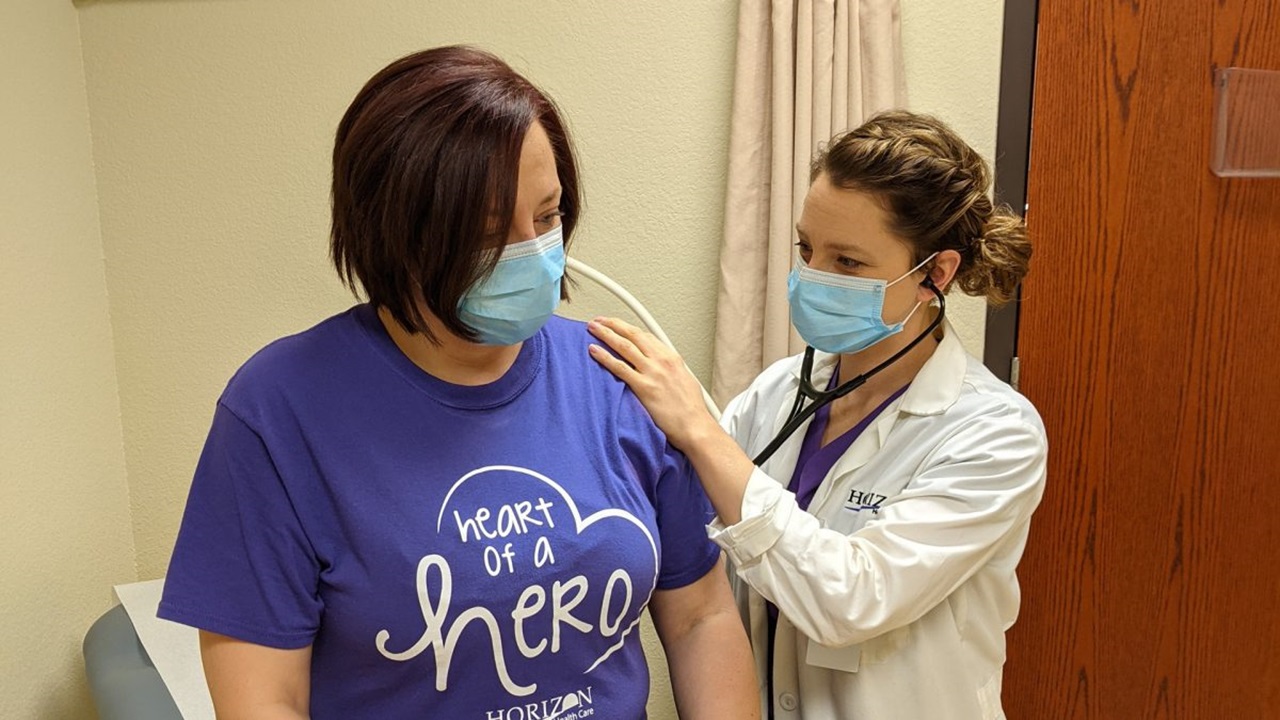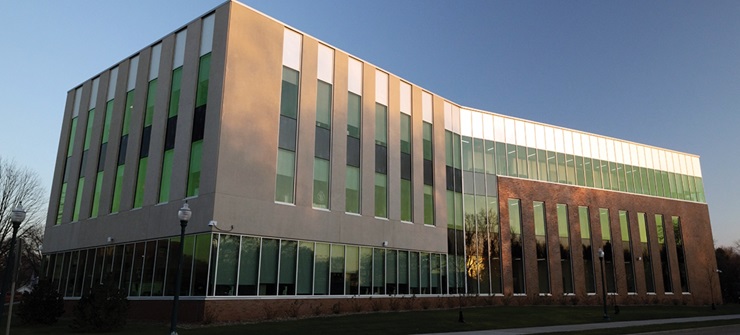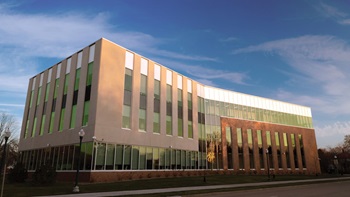Physician Assistants Play Vital Role in Rural South Dakota Health Care

“It was overwhelming the first six months I was here,” said Vietor, a native of Colome, South Dakota, now living in Winner. “I was well prepared in my education and training, but the rural population we serve relies on PAs and nurse practitioners for their care, so we see everything. I manage multiple conditions for patients of all ages.”

Nearly six years later, Vietor continues to commute daily from her home in Winner to faithfully serve the Mission community, and she is one of three PAs and three nurse practitioners working at the health center there, a facility operated by Horizon Health Care. Two family practice physicians visit the health center periodically during each month to provide oversight and guidance.
Presently, PAs in South Dakota can perform their work with greater autonomy, due to a decision made by South Dakota Gov. Kristi Noem that reduces the need for some physician oversight during the COVID-19 pandemic.
Vietor credits the two-year PA program at the University of South Dakota for providing the education she needed to succeed under her clinic’s demanding conditions.
“The didactics during the first year of the program were excellent and so were the 10 different clinical rotations I did in my second year, before graduating,” Vietor explained.
She noted that the PA program at USD is the only such program in the state, and she is grateful that the program allowed her to train in her home state. Her intention from the start of her PA education, Vietor emphasized, was to practice in a small community near where she grew up.
Vietor’s pursuit of a career as a PA reflects a national trend. Since the inception of the PA profession, 51 years ago, there has been a steady increase of women as PAs. The early years saw men dominate the field, but by 1982, gender distribution was nearly equal. Today, women comprise 72% of the 140,000 PAs in the United States.
An ongoing shortage of medical professionals in rural South Dakota underscores the importance of PAs. Many South Dakotans, especially those living in the state’s most rural locales, now rely on PAs for their primary health care. And the profession has responded. Of the 550 PAs in the state, 47% serve rural areas.
Kim Malsam-Rysdon, South Dakota’s Secretary of Health, acknowledges the vital service provided by PAs.
“Physician assistants are increasingly important in providing skilled health care to South Dakotans,” Malsam-Rysdon reported. “That role is especially notable in our rural communities, where a physician assistant might be the only health professional consistently available to help those needing care and treatment.”

One strategy to increase the number of PAs working in South Dakota’s rural communities is to attract people who grew up in rural areas to health care careers and encourage them to return to their hometowns or to another rural area of the state, like Vietor desired to do. USD’s PA program admits 25 students each year, and at least 20 of those must be South Dakotans. Nearly half of the program’s grads from 1995 to 2020 practice in South Dakota, and of that group 20 percent practice in a community other than Sioux Falls or Rapid City.
PA student Brady Hicks is a model for someone wanting to return to his rural roots after completing his schooling and certification. In Hicks’ case, his hometown and target destination is Martin, located not far from Nebraska in the southwestern part of the state. “I grew up 30 minutes from Martin on my family’s ranch,” said Hicks.
“I love the community. It made me who I am, and I want to give back to Martin and this area. My priority is to work as a PA in Martin.”
After completing an undergraduate degree in athletic training, Hicks gained admission to USD’s PA program. Before he graduates in July, he will have performed 10 different clinical rotations at clinics and hospitals across the state, including a stint in Martin. Each of the five-week rotations exposes Hicks to different aspects of health care, such as family medicine, mental health, general surgery, and obstetrics and gynecology (OB/GYN). During his OB/GYN stay at a Rapid City clinic he delivered nine babies, assisted with three others and helped with three cesarean sections.
Hicks is optimistic he will find a position in Martin.
“There are a few options in Martin,” he explained. “My training in primary care will help me find something.”
One aspect of his rotation in Martin that Hicks especially enjoyed was helping people he already knew.
“There’s nothing that can prepare you to take care of people you’ve known your whole life,” he said. “I was able to help people I’ve known since I was a little kid. That is very gratifying. And that’s exactly what I want to continue doing.”



